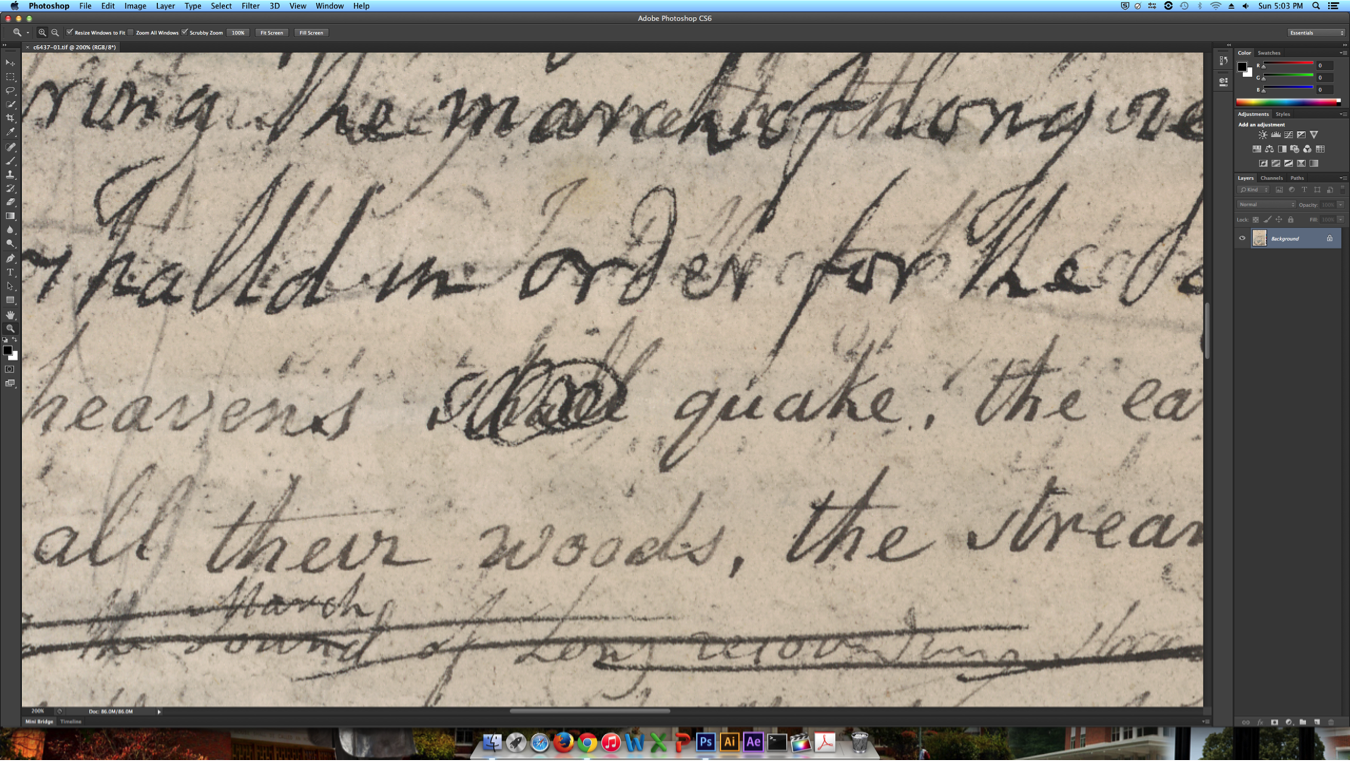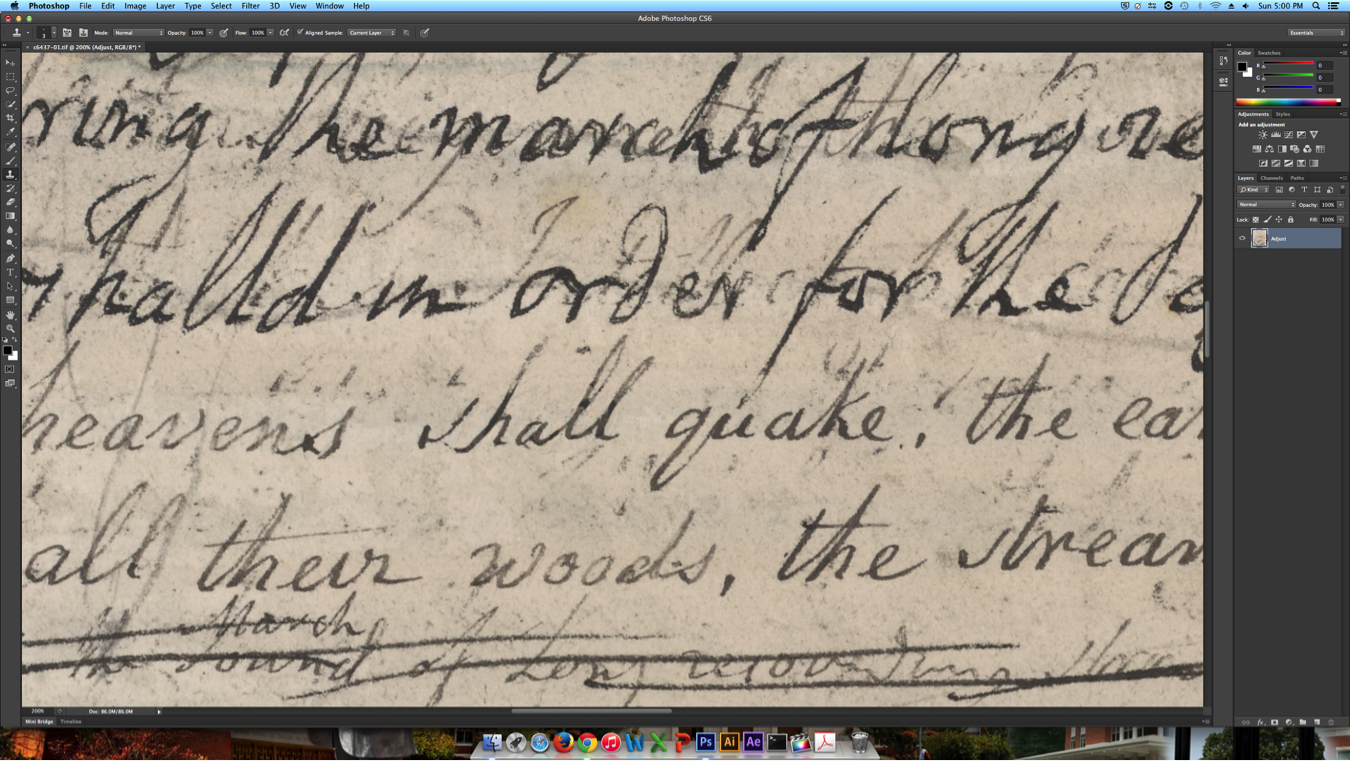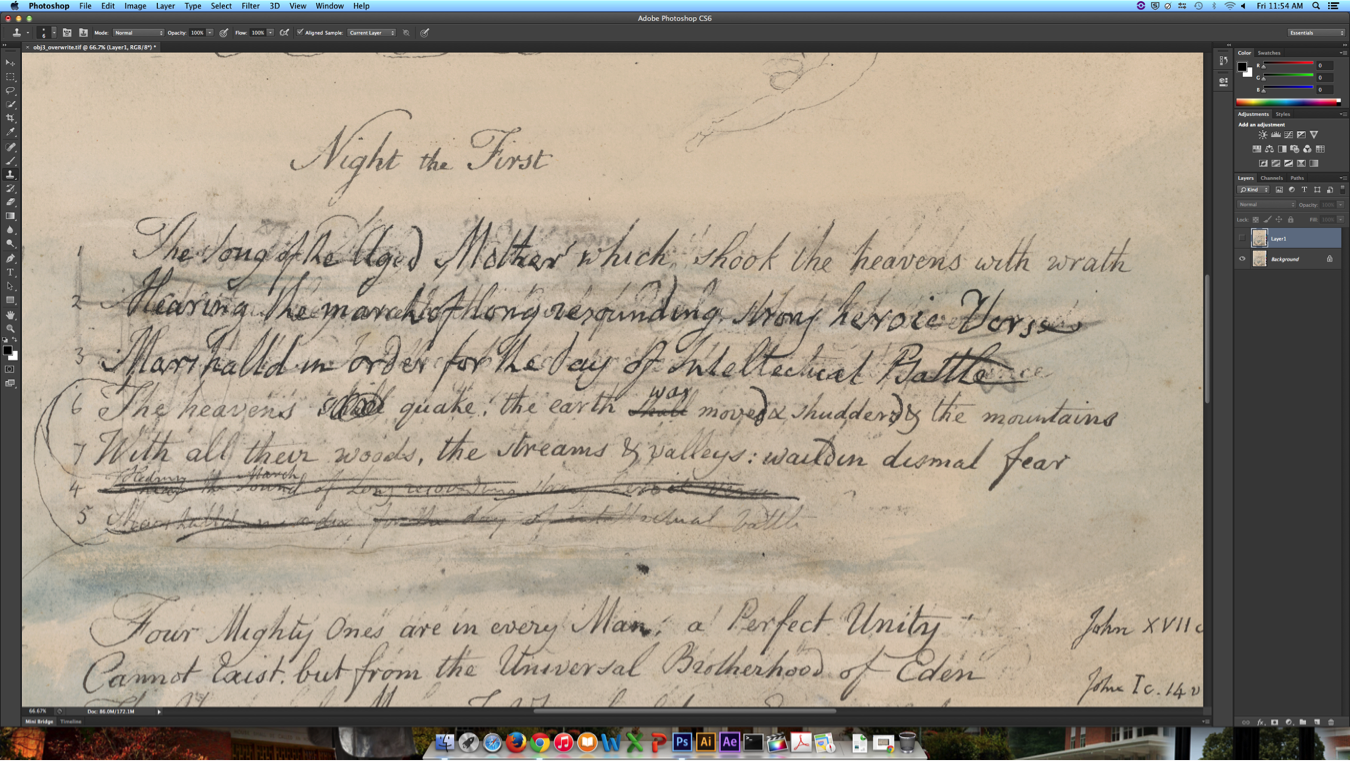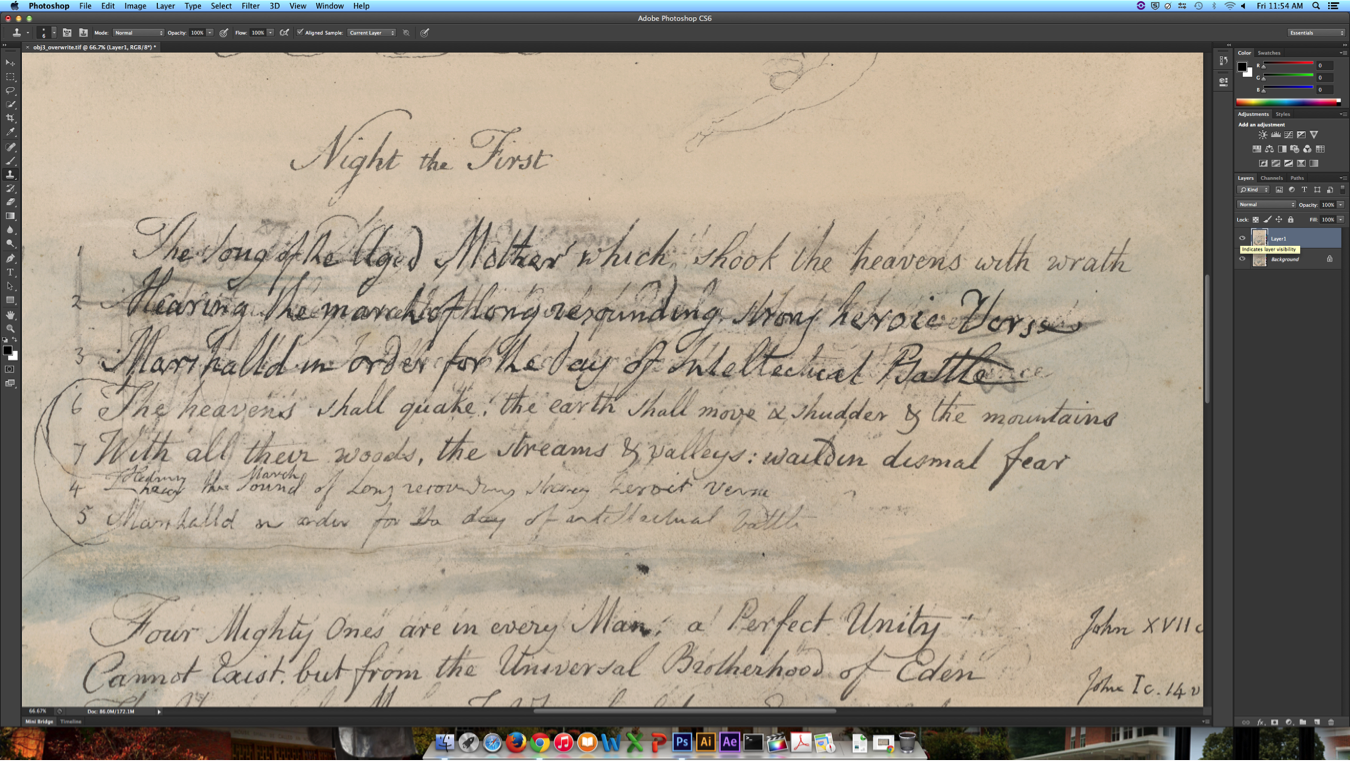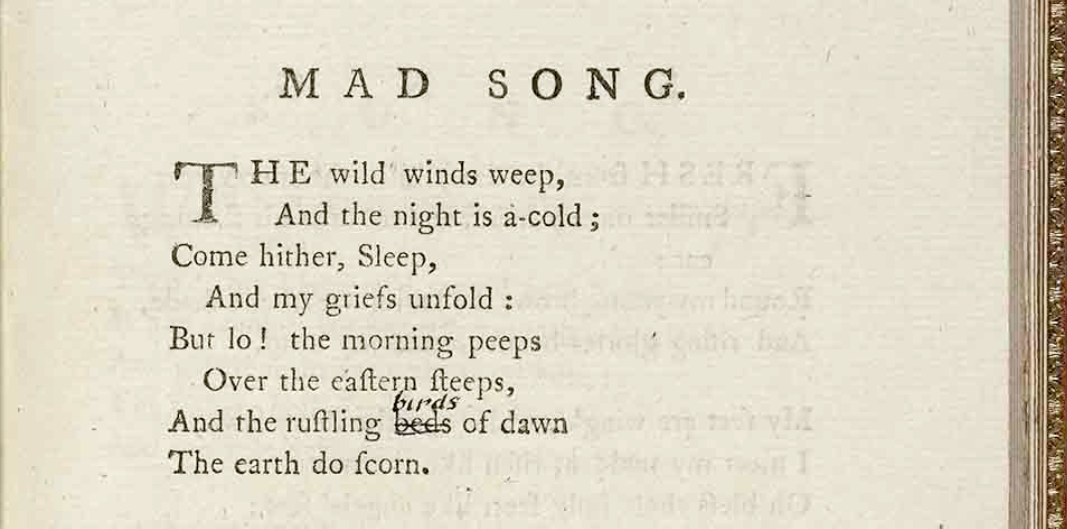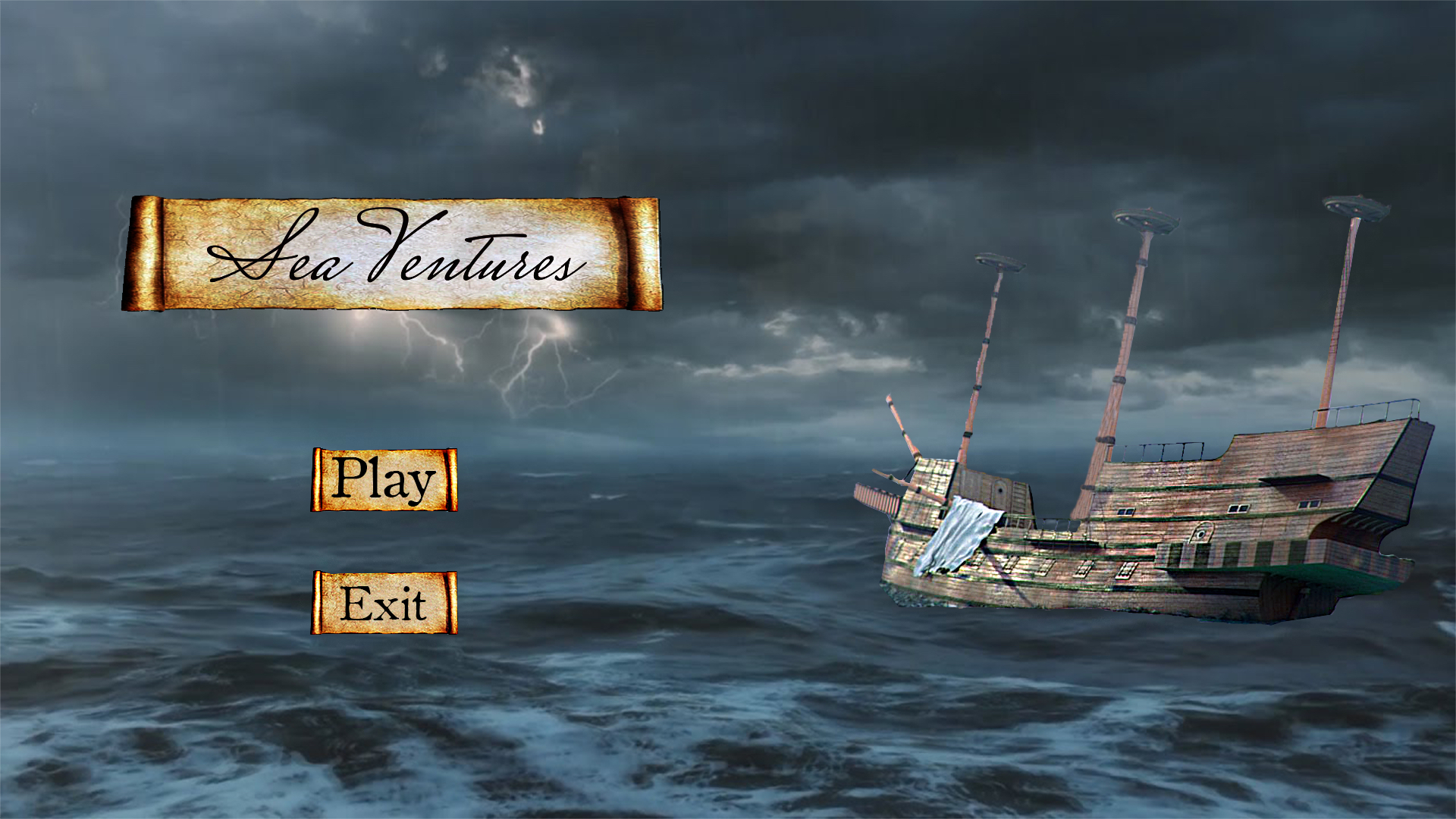This fall I’ve been blogging about forensic experimentation with Blake Archive images in Adobe Photoshop. The idea is that Photoshop can be a [relatively] cheap, easy, and fast way to either answer transcription questions or allow editors to model alternate views of manuscript images for Archive users. In the last two posts, I’ve used examples of faded, hard-to-read text to illustrate the potential usefulness of digital image manipulation.
Interesting stuff, but also pretty conservative in terms of total image manipulation and Photoshop’s technical abilities. This week, we’re going to push the envelope . . . just a bit.
Rescue Mission
I thought it best to start small, so I located a single overwritten word on my usual Four Zoas test object. Our test site is the overwritten “shall” in the image below. (Click to enlarge.)
This is a good test case because we know what the word is underneath, so our real task is to find a method of modeling that knowledge. My instinct was to use the Clone Stamp tool, which allows users to paint pixels with the color data of a selected site of pixels in the same image. In other words, my plan is to paint in bits of blank manuscript over the strikethrough ink. (There are other tools in Photoshop that offer similar results; the Healing Brush tool, specifically. At this point I prefer the Clone Stamp tool because it gives me total control over the painted output. With the Healing Brush tool, a user similarly paints with selected pixels, but the tool also performs a number of blending operations designed for seamless pixel transformation. Undoubtedly this would result in a prettier picture, but I’m not quite ready to introduce such a black box into the workflow. Some comparing between methods will need to be done next.)
Hey, that doesn’t look too bad. Let’s try to apply that same technique over a larger area.
I’m going to focus on the last four lines of that first block of text.
Ta-da! (Truthfully, that ta-da took a couple hours.)
1.21 Gigawatts
Some reflection is important when it comes to this kind of “recovery” work. The temptation is to think we’re going back in time, dialing the clock back on Blake’s manuscript to see what it looked like in previous iterations. While this technique simulates that idea, what is actually happening to the manuscript image is more like sophisticated white-out. The timeline of change for the manuscript moves forward–a reconstruction of the past, not a resurrection.
Which isn’t to say techniques like this one can’t be useful. As I mentioned before, it’s a great way to model knowledge, to illustrate an editorial reading. In traditional editing, too often will an editor come up with a transcription that leaves readers wondering, “How did you get that?” Techniques like this one offer a chance for editors to show their work. And based on how much image manipulation is required to move from A) documentary instance to B) editorial reading, we start to establish a spectrum of plausibility.
All that said, I’m still curious about the abilities of Photoshop to truly solve problems of deletion and transcription. For example, if an overstrike occurs years after the initial inscription or the inks are a different shade, color and contrast adjustment in addition to the Clone Stamp (or Healing Brush) tool could exaggerate those differences and make buried text legible and then able to be modeled.
I’ll keep my eyes peeled for a good case.
—

